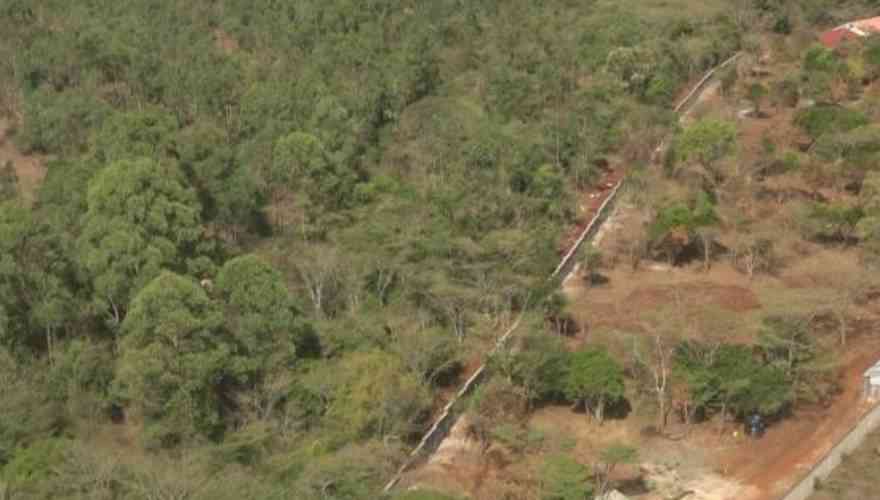By JEVANS NYABIAGE
Until World War I, there was a mad rush by the world’s leading powers to occupy and annex African territory.
Today, more than 100 years later, the world’s most developed countries are again scrambling to make their respective marks on the continent. Although the mode of extraction has changed, the end goal remains the same — to gain access to Africa’s coveted bounty of commodities.
China is emerging the dominant consumer of industrial metals. The Asian tiger controls about 35 per cent of total refined copper, 35 per cent of aluminum and 40 per cent of refined nickel consumption.
Besides China, which is hungry for resources to fuel its growth, North America, Europe, most Asian nations and Latin America are heavy consumers of these industrial metals. And Africa, with its huge and varied mineral resources, has become the natural hunting ground.
Walter de Wet, the head of commodity research at Standard Bank, says China is short on bauxite, coal, copper, iron ore, oil and platinum group metals (PGMs), hence the rush into Africa.
Copper and cobalt
In Zambia and the Democratic Republic of Congo, there are vast quantities of copper and cobalt. There is gold in Nigeria, and oil in Sudan and Libya. South Africa is rich in mineral resources and is the world’s biggest exporter of chromium and platinum or PGMs (8 per cent of total exports). It also exports gold (8 per cent), coal (6 per cent), iron ore (7 per cent) and diamonds. Guinea is home to Bauxite and alumina.
De Wet says the current global gold reserves total approximately 51,000 tonnes, of which Australia holds the largest share at 14.3 per cent followed by South Africa at 11.8 per cent. Africa is a major gold producer, providing about 600 tonnes, or about 22 per cent, of the 2,689 tonnes of gold produced worldwide in 2010.
South Africa is the largest gold producer in Africa, accounting for 42 per cent of total output, followed by Ghana at 20 per cent and Mali at 9 per cent. China alone consumes almost 20 per cent of all gold produced.
Also, South Africa accounted for 95 per cent of global reserves of PGMs as at December 31, 2010, and produces 80 per cent of the metals. It is also the largest producer of rhodium and the second-largest producer of palladium after Russia.
Other PGM-producing countries in Africa include Zimbabwe, Botswana, and Ethiopia, which together produced between 5 and 10 per cent of platinum, palladium and rhodium in 2009.
The East African region is also bursting with hydrocarbon potential. Kenya is reported to hold huge potential for rare earth metals, and the recent discovery of oil is expected to propel East Africa’s largest economy into the league of major commodity producers. Tanzania contains 230 billion cubic feet (Bcf) of natural gas reserves.
Natural gas
Exploration majors Anadarko and Eni have also made material offshore discoveries in the Rovuma Basin, which means Mozambique will become a major natural gas producer. It is estimated that the potential places the country in the top 10 global gas reserve rankings and in the top five for non-associated gas.
Stay informed. Subscribe to our newsletter
Africa also holds 32 per cent of the world’s bauxite resources. The continent possesses the largest bauxite reserves in the world, with Guinea alone accounting for 26.4 per cent of total global reserves.
Lately, Chinese copper imports have surged, which has also seen African copper production grow at a fast clip. The continent accounted for 8.2 per cent of total global mined copper production in 2010 and holds 10 per cent of the world’s copper reserves. Zambia and DRC are the main copper producing countries in Africa, but their mineral reserves are dwindling.
“Moreover, low investment in base metal exploration in these countries further undermines copper production. Only $183 million was invested in base metal exploration in DRC and Zambia compared with $405 million in Chile alone,” said de Wet.
Still, African copper production has increased in the past five years to 75 per cent in 2010, compared with production growth of less than 5 per cent by several of the largest producers.
The Standard Bank study.
 The Standard Group Plc is a
multi-media organization with investments in media platforms spanning newspaper
print operations, television, radio broadcasting, digital and online services. The
Standard Group is recognized as a leading multi-media house in Kenya with a key
influence in matters of national and international interest.
The Standard Group Plc is a
multi-media organization with investments in media platforms spanning newspaper
print operations, television, radio broadcasting, digital and online services. The
Standard Group is recognized as a leading multi-media house in Kenya with a key
influence in matters of national and international interest.
 The Standard Group Plc is a
multi-media organization with investments in media platforms spanning newspaper
print operations, television, radio broadcasting, digital and online services. The
Standard Group is recognized as a leading multi-media house in Kenya with a key
influence in matters of national and international interest.
The Standard Group Plc is a
multi-media organization with investments in media platforms spanning newspaper
print operations, television, radio broadcasting, digital and online services. The
Standard Group is recognized as a leading multi-media house in Kenya with a key
influence in matters of national and international interest.









